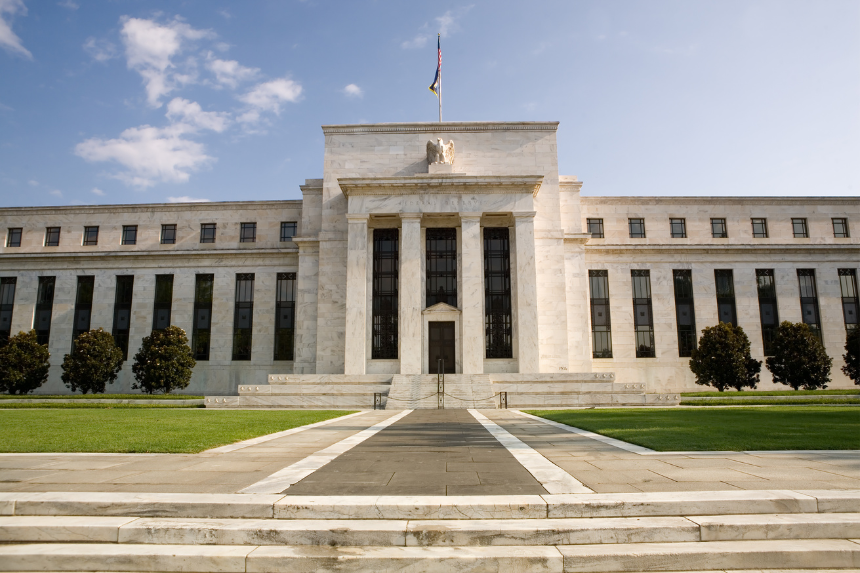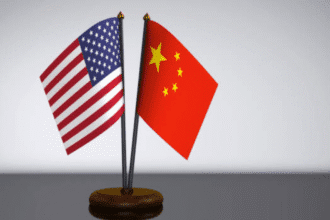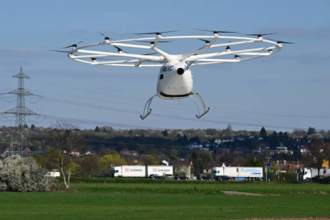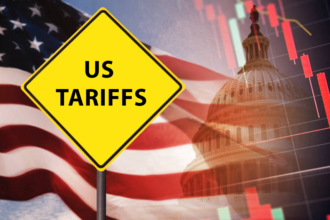Declaring that President Donald Trump’s tariffs are “clearly” driving up prices, the US Federal Reserve has lowered its growth forecasts. On Wednesday, the US Federal Reserve published its most recent economic assessment, maintaining the same interest rate while evaluating the developing effects of White House plans.
- How have tariffs changed economic stability and pricing?
- Trump's reaction to the Fed's decision?
- How Has the Stock Market Reacted to These Policies?
- The Fed's revised economic projections?
- How Are Officials Responding to These Changing Economic Patterns?
- How Difficult Does the Fed Find It to Control Inflation?
- Are further interest rate cuts on call?
- Ahead for the US economy: what?
Widely predicted by experts, the ruling maintains the benchmark interest rate of the US Federal Reserve at about 4.3%, where it has stayed since December. Though morale has dropped drastically and uncertainty is “remarkably high,” Fed Chairman Jerome Powell reassured us that the economy is still steady despite worries about tariffs.
How have tariffs changed economic stability and pricing?
Chairman Powell admitted that charges applied on imported goods—tariffs—are causing inflation. ” Clearly, some of it, a good part of it, is coming from tariffs,” Powell said following the announcement by the US Federal Reserve. These rises threaten the principal objective of maintaining price stability of the central bank.
“Progress is probably delayed for the time being,” he said, suggesting that the bank’s approach to stabilize inflation could need changes. Notable rises in goods prices recently have raised questions about inflationary pressure.
Companies depending on imported items have seen higher expenses, which has driven them to either absorb losses or raise prices. This has especially impacted retail and manufacturing, which rely on supply chains across several nations. Particularly small firms have found it difficult to adapt to these developments; some have seen declining sales resulting from rising consumer prices.
Trump's reaction to the Fed's decision?
President Trump, who has lately attacked the central bank, demanded a rate reduction following the announcement. “The Fed would be MUST better off CUTTING RATES as US Tariffs start to transition (ease!) their way into the economy,” Trump said on Truth Social. “Do the right thing. American Liberation Day is April 2nd!
Trump has vigorously advocated tax cuts, deregulation, and government spending cuts while also pushing fresh tariffs since assuming office in January. Economists have advised that these policies would cause firms more uncertainty and price rises.
Trump has defended his policies, contending that by pushing home industry and lowering reliance on imported goods, tariffs will eventually help the nation. In a recent address, he remarked, “We’re bringing back American jobs, and that’s really matters.”
How Has the Stock Market Reacted to These Policies?
With the S&P 500 declining 10% from February levels and returning to values last seen in September, economic worries have helped to fuel a stock market sell-off. Major stock indices rallied, though, following the announcement by the US Federal Reserve, closing more than 1% higher.
Investor mood has been erratic; many experts see trade policy uncertainties and the Federal Reserve’s reaction as main causes of volatility. Some businesses have postponed investment choices until more certain direction on future economic conditions.
Trump has minimized worries, noting that the tariffs could cause “a little disturbance” but contending that his policies will promote long-term economic growth. “We are playing the long game,” he said, exhorting companies and financiers to be patient.
The Fed's revised economic projections?
Now projecting inflation at 2.7% by the end of the year, up from the previous estimate of 2.5%, the US Federal Reserve has changed its economic projections.
At 1.7%, down from the prior estimate of 2.1%, is economic growth.
Although Wednesday’s interest rate stayed the same, the Fed’s projections show a possibility of rate reduction by year’s end. Aimed at offering greater economic support, the central bank also declared it will halt down the selling of assets including government debt.
How Are Officials Responding to These Changing Economic Patterns?
Fed officials remain wary as they track changes in the economy. Whitney Watson, an investment consultant, said “For the time being, the Fed is in wait-and-see mode as it monitors whether the recent growth slowdown develops into something more serious.”
Some government representatives have discounted worries about tariffs. Emphasizing the White House’s ongoing respect of the Fed’s independence, Kevin Hassett, Director of the National Economic Council, said “Chairman Powell is clear that if there were a tariff effect, it’s a transitory one.”
Others have cautioned, meanwhile, that protracted trade conflicts could inflict long-term harm. According to a US Chamber of Commerce spokesman, “businesses need stability to plan for the future”. “Unertainty is never good for economic growth.”
How Difficult Does the Fed Find It to Control Inflation?
Starting in 2022, the Fed sharply increased borrowing rates to lower inflation. Though it remains above the Fed’s 2% objective, inflation has dropped to 2.8% as of February since then. Recent polls, however, indicate declining consumer confidence and rising inflation expectations.
Households accelerate purchases when they anticipate higher costs, therefore aggravating inflation. Lindsay James, an investment expert, said “the problem the US faces is that inflation remains a primary risk and is showing signs of consumer expectations becoming unanchored from the 2% target.”
Although US demand indicators seem to be declining, inflation keeps rising and raises questions about whether present economic policies might cause a spiral. Powell told us that although the US Federal Reserve is attentively tracking inflation projections, the “hard data” does not show any concerning trends.
Are further interest rate cuts on call?
Speculation over whether the US Federal Reserve would lower interest rates in the near future is rising given slower economic development and inflation being above target. Reduced interest rates would make borrowing less expensive, hence maybe encouraging economic activity.
Powell has stayed wary about acting quickly though. “We’re well-positioned to wait for further clarity and not in any hurry,” he added, stressing the Fed’s circumspection in the face of continuous economic uncertainty.
At least one rate decrease by the end of the year has already been priced in by the financial markets; other analysts estimate more cuts should the state of the economy worsen. Still, the Fed is mostly concerned with preserving stability and juggling inflation’s risks against the necessity to boost economy.
Ahead for the US economy: what?
The US economy is still at a crossroads where conflicting factors will shape its course. Although the US Federal Reserve seeks to negotiate economic growth and inflation issues, the effect of tariffs and more general trade policies remains a wildcard.
Uncertainty still defines the current economic scene for both firms and consumers equally. It remains to be seen if the Fed’s circumspect approach will be sufficient to guide the economy over these difficulties.
All eyes will be on the next round of economic data—and the possible policy reactions—as Powell and his team keep tracking important signs. The next months could be crucial in deciding the long-term consequences of monetary measures and trade policy on the general state of the economy.








